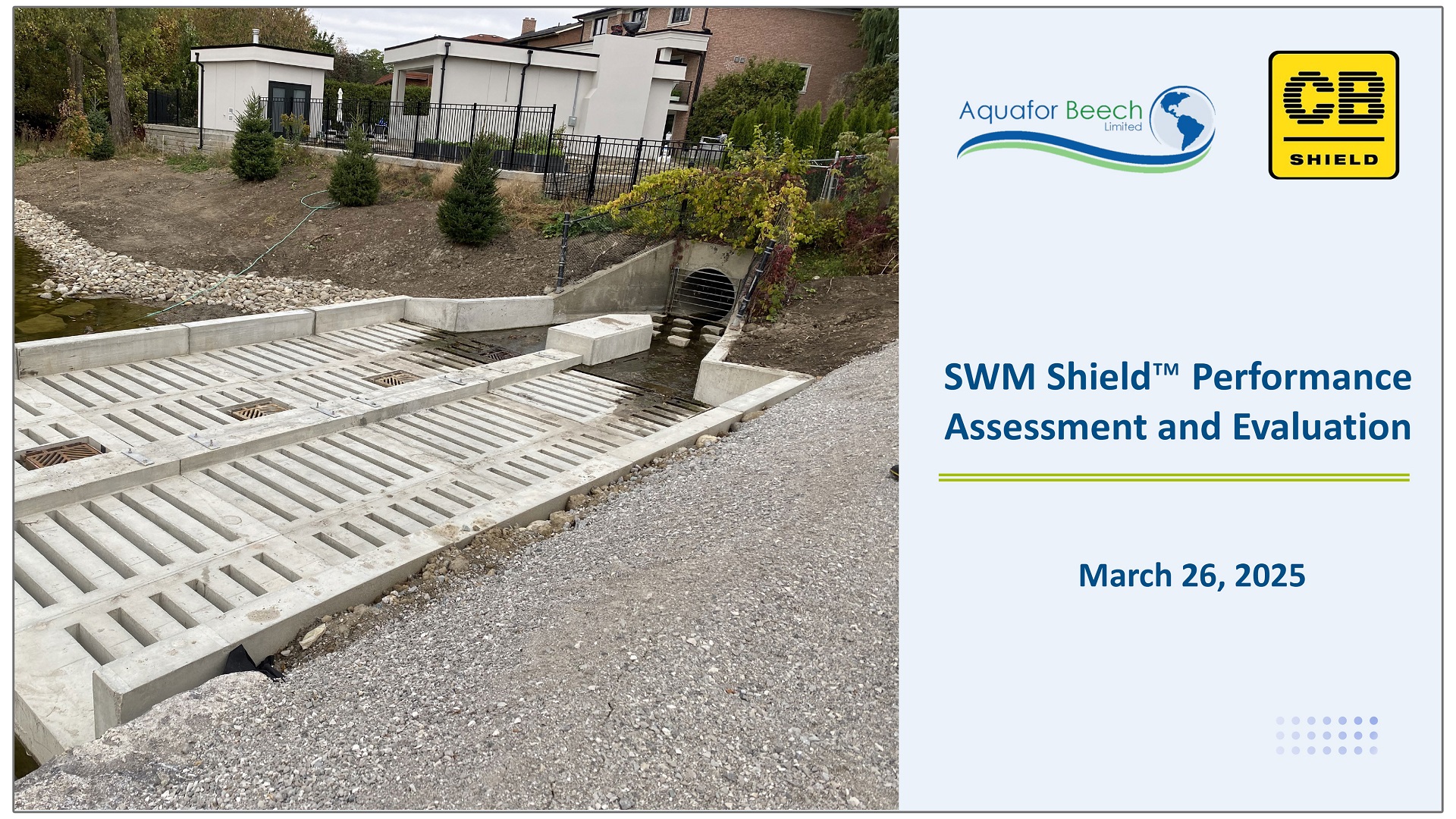TRACK 2, DAY 1
Excess Soil Regulation – Improving SWM Pond Performance and Optimizing Operation & Maintenance of Sediment Removals: Performance Assessment of Four (4) SWM Shields
ABSTRACT
Sediment transport from surface runoff poses is a reality in stormwater management, leading to downstream sediment accumulation and reducing the efficiency of stormwater ponds.
With the requirement of O. Reg. 406/19: On-Site and Excess Soil Regulation (“Excess Soil Regulation”), the continual management and removal of the accumulated sediments within end-of-pipe stormwater management ponds represents a significant challenge to asset owners and operational staff both in terms of time and operational funds.
To address these challenges, SWM Shields, a specially designed modular pre-cast concrete product act as a pre-treatment device, preventing sediment from entering the forebay, thereby offering the potential to optimize operational activities, extending pond clean-outs, reducing costs and improving water quality performance.
SWM Shields have been designed as pre-treatment devices that capture sediment before it enters stormwater ponds, offering several benefits:
• Location and Function: SWM Shields are installed at the inlet of stormwater ponds, specifically before the forebay, to intercept and retain sediment transported by surface runoff. By capturing sediment upstream, they prevent excessive buildup in eth forebay as well as in the main pond and improve overall maintenance efficiency
• Enhanced Maintenance: Compared to cleaning the entire forebay of a stormwater pond, SWM Shields allow for easier and more cost-effective maintenance, reducing the frequency and effort needed to maintain pond capacity by removing large scale pumping, reducing erosion and sediment control reequipments and eliminating the need for sediment quality testing/ disposal option identification.
• Sediment and Phosphorus Retention: SWM Shields also play a critical role in nutrient management by trapping sediment that contains phosphorus, thereby reducing the nutrient load entering the pond and therefore downstream water bodies and supporting water quality objectives.
Aquafor Beech Ltd. conducted a performance assessment of four (4) SWM Shields, installed in 2018 and 2024 across two (2) sites in Vaughan and two (2) in the Region of Peel, to evaluate their effectiveness in sediment capture and phosphorus control.
This assessment included:
• Bathymetric Surveys: Used to measure the volume of sediment retained within the SWM Shields over time, providing data on their storage capacity and clean-out frequency.
• Phosphorus Content Analysis: Determination of the phosphorus concentration within the trapped sediment, contributing to nutrient management strategies for nearby water bodies, such as Lake Simcoe.
• Sediment Characteristic Assessment: assessing the grain size, bulk density and general characteristics of the sediment in comparison to other projects.
• Cost Comparison: Sediment removal costs for SWM Shields vs. removals of sediment from pond forebays.
Key findings from this study include:
• Sediment Retention Capacities: Ranging from approximately 100 to 265 kg/ha/year, with variations influenced by factors such as imperviousness, land use, and local precipitation patterns.
• Phosphorus Concentrations: Ranged from 600 to 740 mg/kg, aligning with the objectives of many SWM Master Plan, PWQOs and the Lake Simcoe Protection Plan to reduce phosphorus inflows to surface water, Lake Simcoe and the Great Lakes.
• Economic Value: According to the Lake Simcoe Region Conservation Authority’s phosphorus offset policy rate of $35,770/kg/year, the SWM Shields provide a cost-effective solution for phosphorus retention.
This performance assessment highlights the effectiveness of SWM Shields in reducing sediment loads and supporting phosphorus management in stormwater systems, contributing to improved water quality and more efficient stormwater infrastructure management.
ABOUT THE PRESENTER

Chris Denich, Aquafor Beech Ltd.
Mr. Denich is the President and Director of Water Resources & Green Infrastructure at Aquafor Beech Ltd., where he participates in a variety of municipal, private and public sector projects focusing on stormwater management using innovative approaches such as Low Impact Development (LID), for both retrofit and new developments.
He is responsible for the planning, project management, staff assignments, agency contact and public consultation of such projects.
In addition, Mr. Denich plays a key role in the assessment, planning, detailed design, tender preparation, construction administration and supervision of stormwater infrastructure, including stormwater management facilities (wet ponds, dry ponds and wetlands) and decentralized LID sustainable stormwater techniques.

